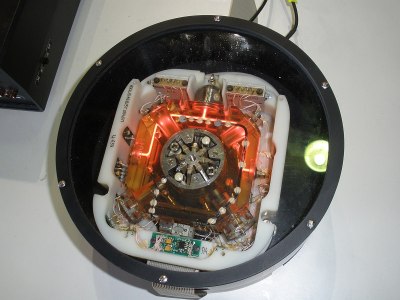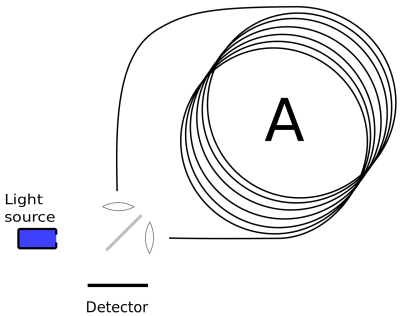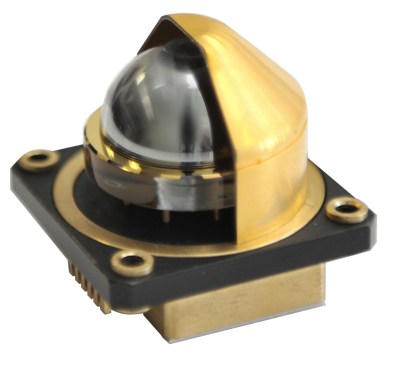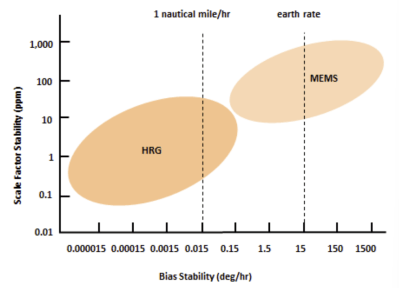
Back in the old days, finding out your location on Earth was a pretty involved endeavor. You had to look at stars, use fancy gimballed equipment to track your motion, or simply be able to track your steps really really well. Eventually, GPS would come along and make all that a bit redundant for a lot of use cases. That was all well and good, until it started getting jammed all over the place to frustrate militaries using super-accurate satellite-guided weapons.
Today, there’s a great desire for more accurate navigational methods that don’t require outside communications that can easily be jammed. High-tech gyroscopes have long been a big part of that effort, allowing the construction of inertial navigation systems with greater accuracy than ever before.
Why Inertial Measurement?
The fact is that GPS and other satellite navigation systems can no longer be relied upon in contested battlefields, and even in peaceful areas at times. The technology to jam or spoof these navigational systems is now readily accessible, to both state actors and even the well-resourced individual.
Thus, there is a great desire for navigational systems that are impervious to jamming. An inertial navigation system (INS) is just that. The concept is simple. From a known starting position, an INS measures acceleration and rotation of a given vehicle or projectile. From these measurements, it’s possible to calculate position, orientation, and velocity over time via dead reckoning. In a simplistic example, if you start at your house, quickly accelerate to 2 meters per second, and run in a straight line for a certain length of time, you could determine your position relatively easily. An INS does exactly that, but in three dimensions, and really really accurately.
The problem with the dead reckoning approach is that errors are cumulative. If you get your speed measurement slightly wrong, for example, your estimated current position will rapidly become more inaccurate over time.
Thus, better measurements create a far more accurate fix that’s usable for longer without needing to check in with an external reference like GPS. Hence the interest in high-performance gyroscopes that can measure more accurately with less drift over time. The latest technologies eschew the spinning rotors and fancy mechanical contrivances of the past for altogether wilder approaches.
Ring Laser Gyroscopes

Ring laser gyros, or RLGs, use a closed ring of light to measure angular acceleration. At the heart of the RLG is a triangular or square-shaped optical path, formed by mirrors that allow light to travel in a closed loop. Within this loop, two beams of light, typically from a single laser source, travel in opposite directions. Under stationary conditions, both beams of light take an equal amount of time to complete a loop, resulting in no observable phase difference between them.
However, things change when the gyroscope experiences rotation, thanks to the Sagnac effect. When the RLG is subjected to rotation, the path length for the beam of light traveling in the direction of rotation effectively becomes longer. In turn, the path for the opposite beam becomes shorter. This difference in path lengths causes the two beams to experience a shift in their relative phase. As the beams complete their paths and reconverge, they interfere with each other. The phase difference manifests as an interference pattern. By measuring this pattern, one can calculate the angular velocity experienced by the gyro.
It’s worth noting that RLGs are remarkably sensitive, capable of detecting minute changes in angular velocity. This sensitivity arises from the fact that light travels at an incredibly high speed, and even small rotational motions can induce detectable phase shifts in the light beams. Moreover, the solid-state nature of RLGs, devoid of moving mechanical components, grants them a robustness that is especially valuable in applications where durability and reliability are paramount. From aviation to satellite navigation, RLGs have found their niche, ensuring precise rotational measurements even in the most demanding environments.
RLGs can be a little fussy though, particularly when it comes to detecting low rates of rotation. At these levels, the two laser beams moving in opposite directions can “lock-in” to each other, hiding any phase difference. To avoid this from happening, RLGs are often subject to “forced dithering”, where the laser cavity is actually rapidly rotated back and forth, usually around 400 Hz. This keeps the system’s angular velocity outside of the lock-in range. To avoid lock-in occurring at the extremes of motion, where the gyro is changing direction, white noise is often introduced into the 400Hz rotations.
RLG-based navigation systems have become popular in commercial aviation as well as in military contexts. Typical accuracy can be on the order of one nautical mile of error per hour of operation. Larger systems, or systems that stack up additional gyros to compare measurements can improve performance further.
Fiber-Laser Gyroscopes
 A fiber-optic gyroscope, or FOG, works using the Sagnac effect, just like a ring-laser gyro. However, instead of a using a small rigid cavity as in a ring laser gyro , a long length of looped fiber-optic cable is used as the cavity. Two beams from the same laser are injected into the fiber in opposite directions. Their interference pattern, as impacted by the rotation of the gyro assembly, is then measured in the same way as the ring laser gyroscope.
A fiber-optic gyroscope, or FOG, works using the Sagnac effect, just like a ring-laser gyro. However, instead of a using a small rigid cavity as in a ring laser gyro , a long length of looped fiber-optic cable is used as the cavity. Two beams from the same laser are injected into the fiber in opposite directions. Their interference pattern, as impacted by the rotation of the gyro assembly, is then measured in the same way as the ring laser gyroscope.
The benefit of the FOG is that the impact of the Sagnac effect is effectively increased by a multiple of the number of loops of fiber optic cable. This is because the laser’s path is much longer, by virtue of passing through a long coiled-up fiber optic cable. The longer path length means the path difference is also greater between the two interfering beams, giving the device a greater potential resolution.
Thanks to the capability to pack a very long laser cavity into a compact space, practical fiber-optic gyroscopes can be built with excellent performance in a compact space. Large marine examples tuned for optimum performance can offer accuracy on the order of 1 nautical mile over 360 hours of operation.
Hemispherical Resonator Gyroscopes

Hemispherical resonator gyroscopes, or HRGs, use mechanical resonance as the basis of their operation. They offer benefits over traditional mechanical gyros, as well as laser types, in that they have drastically reduced Size, Weight, and Power (SWAP) requirements. They make it possible to create highly accurate intertial navigation systems in compact, portable packages.
At the core of the HRG is a thin, hemispherical shell, typically crafted from quartz. This shell is anchored at its base and can resonate, or vibrate, in a specific mode when appropriately excited. Just as a wine glass produces a distinctive tone when flicked, the hemispherical shell of the HRG resonates at a particular frequency when driven by external actuators.
The shell must be delicately tuned for peak performance via techniques like ion beam erosion or laser ablation, much in the same way that quartz radio crystals are tuned to a specific frequency. The resonator is then coated with an ultra-thin metallic film. To initiate the resonance, electrostatic actuators are strategically placed in the vicinity of the resonator. Some designs use a hemispherical electrode within the hemispherical resonator, but more compact and cheaper designs can be achieved with simpler flat electrodes located on the equatorial plane of the resonator. Once activated, these actuators cause the hemispherical shell to vibrate in its resonant mode.

Now, when the HRG experiences an angular motion, the Coriolis force comes into play. As the HRG itself rotates, the pattern of the vibration rotates too, but not by as much. The shifted vibration pattern can be picked up by the gyro’s electrostatic sensors, which convert them back into electrical signals. By analyzing these signals, the angular velocity of the HRG can be accurately determined.
HRGs have been used in a wide variety of contexts, from spacecraft to commercial aircraft and in guided weapons. Their compact size means they are well-suited to more compact mobile platforms. Peak performance figures are, to a degree, classified secrets, but they are orders of magnitude better than popular MEMS gyroscopes commonly used in consumer hardware.
Conclusion
If you’re eager to design a navigational system that can operate in areas where satellite communications are denied, you’ll likely find yourself exploring these advanced gyroscope technologies. Whether you’re tangling with congested radio spectrum, or operating underground or underwater, these advanced gyros are key to achieving the minimum in drift over time. They don’t come cheap, and they’re certainly not easy to build, but these devices have become staples in the world of high-end inertial navigation devices.
Fancy Gyroscopes Are Key To Radio-Free Navigation
Source: Manila Flash Report
0 Comments